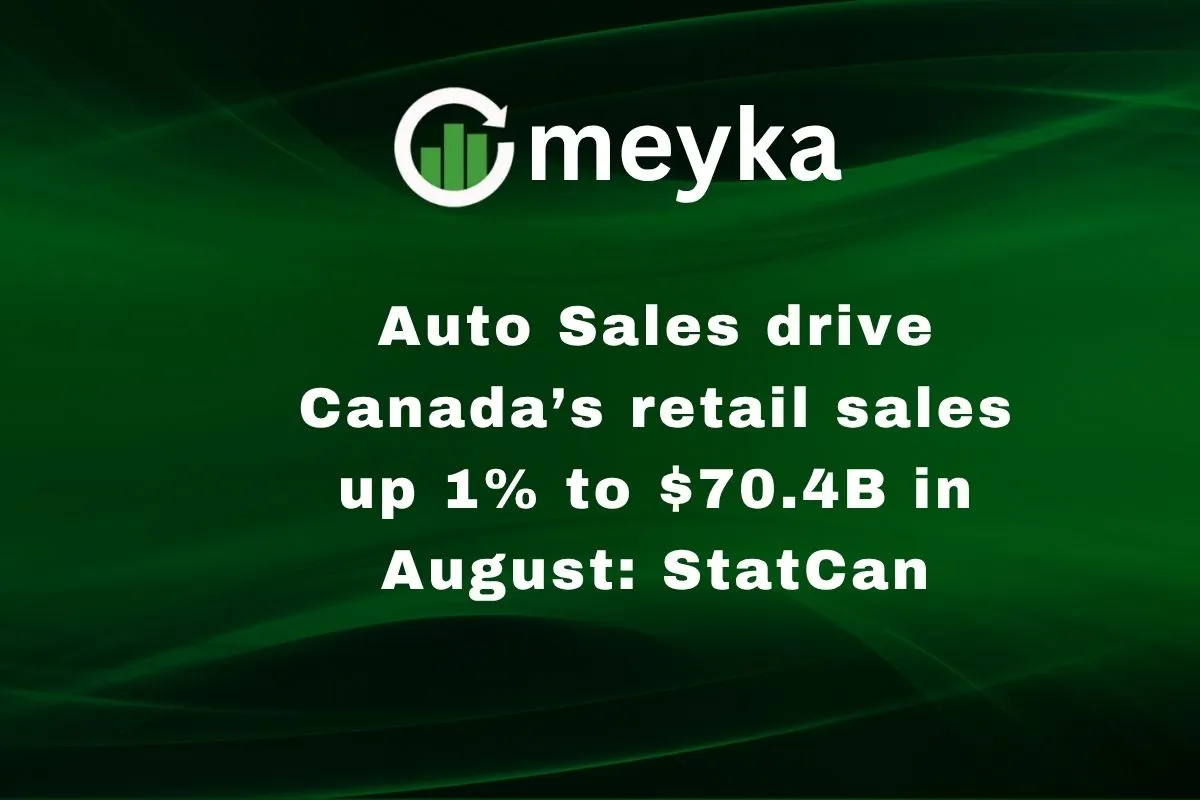Auto Sales drive Canada’s retail sales up 1% to $70.4B in August: StatCan
In August 2025, Canada’s retail sales rebounded by 1.0%, reaching C$70.4 billion. A major reason for that gain? Auto sales, sales at motor vehicles and parts dealers rose 1.8% that month. We’ll walk through: what the numbers show, how much the auto sector contributed, what other retail categories were doing, the implications for Canada’s economy, and what to watch next.
What the Numbers Show
Retail trade in August 2025 hit C$70.4 billion, edging up 1.0% from July. When we exclude auto and parts sales, the “core” retail growth was 0.7% for the month. In volume terms (i.e., adjusted for price changes), retail sales also rose by about 1.0%. Out of nine main retail subsectors, six posted gains in August. Provincially, Ontario showed the largest increase in dollar terms (+1.2%), driven by auto sector strength. So, in short, the retail sector returned to growth, and the auto segment played a leading role.
The Role of the Auto Sector
When we dig in, we see that auto sales were key. In August, the motor vehicle and parts dealers category rose 1.8%. New car dealers posted a stronger rise (~2.3%), and used car dealers rose around ~1.5%. Because vehicles are high-ticket items, they can move the total retail number significantly. That means when lots of cars are sold, the headline retail figure gets a boost. But it also means growth might be more volatile: if auto sales slow down, the overall number could come under pressure.
Why might auto sales be rising now? A few possibilities: pent-up demand from earlier months when consumers delayed purchases, promotional incentives from dealerships, or trade-in activity. At the same time, with higher interest rates and cost of borrowing, it’s noteworthy that consumers are still buying vehicles in decent numbers.
Other Sector Performances & Underlying Trends
Beyond autos, here’s how things shaped up:
- Clothing and accessories retailers posted a solid gain of ~3.2% in August.
- Food, beverage, and supermarket sales aw modestly growing (~0.3%).
- The building materials and garden equipment sector, however, slipped a bit (~-0.3%).
- E-commerce sales increased only marginally (0.1%) to C$4.3 billion, accounting for about 6.1% of total retail trade.
- Regionally, while five provinces saw growth, some (like Nova Scotia) saw declines.
This suggests that while auto sales have propelled growth, the broader retail base is showing signs of mixed strength. The core retail sectors are growing, but not dramatically, and some parts of the market remain soft.
Broader Economic and Social Impacts
Why does this matter? Retail sales account for about 40% of consumer spending in Canada. When retail spending rises, it can signal stronger consumer confidence, job growth, and economic momentum. Looking at policy: the Bank of Canada has been closely watching consumer behavior amid inflation and interest-rate pressures. The strong August result may make the Bank pause before cutting rates, even though the next month looks uncertain.
On the social side, rising auto sales can reflect that people feel stable enough to invest in large purchases, cars, in many cases, also signal mobility, status, or life changes (e.g., family growth). But we must also remember: if auto sales are artificially inflated by financing deals or temporary incentives, the underlying consumer strength might be overstated.
Risks: If auto sales falter and core retail sectors lose momentum, consumer spending could slow, which in turn may drag down the economy. The fact that some sectors are weak suggests the growth is not evenly distributed.
Looking Ahead & What to Watch
There are several key things we should keep an eye on:
- Early estimates for September show a possible drop of 0.7% in retail sales. If that happens, it would show that August’s growth might not be sustainable.
- Will auto sales continue to lead growth, or will they pull back? Large-ticket purchases are sensitive to interest rates, credit conditions, and incentives.
- Will core retail sectors (ex-autos) gain strength so that growth is more balanced?
- Employment, wage growth, and borrowing costs are important: if consumers lose income growth or face higher debt service, spending could slow.
- Regional variation: Some provinces are doing better than others; local economies, job markets, and incentives matter a lot.
- For businesses: Retailers and auto-dealers should monitor supply-chain issues, promotional conditions, and credit trends.
- For policy: A one-month uptick is good, but sustained growth will matter more for GDP and inflation dynamics.
Conclusion
We’ve seen that August’s 1.0% rise in Canada’s retail sales to C$70.4 billion was significantly driven by stronger auto sales. While that is a positive sign for consumer activity, we must be careful: much of the lift comes from one high-ticket category, and other retail segments are showing more modest gains. The question now is whether this growth is built on a solid footing, or whether the next few months will bring a stumble. As we move forward, how auto sales evolve and how core retail sectors perform will tell us a lot about the broader health of Canada’s consumer economy.
Disclaimer:
The content shared by Meyka AI PTY LTD is solely for research and informational purposes. Meyka is not a financial advisory service, and the information provided should not be considered investment or trading advice.






